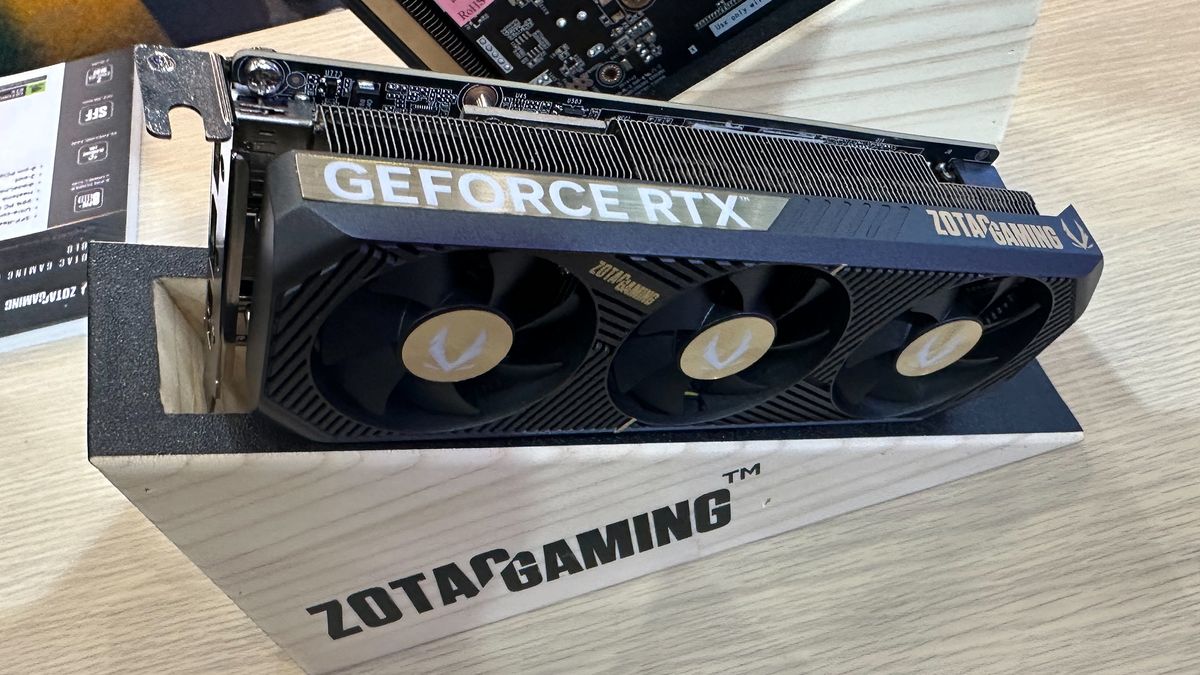Why I decided to go for broke and write a movie trilogy
I started writing my own film scripts when I was ten, and I basically wanted to be Indiana Jones. Well, I wanted to be Indy, the director and the guy who did the stunts and the storyboards after seeing Temple of Doom with my dad at the Harrogate Odeon.
He'd bought me the Official Souvenir Magazine – I knew it was important – which was full of colourful costume sketches, storyboards detailing some of the action I'd just seen, and glossy pictures of cast and crew in glamorous locations. I think that was the first time I had an inkling of what I wanted to do with my life, but growing up in a small Yorkshire town wasn't exactly conducive to being Indiana Jones: the most useful film locations there were my buddy Richard's back garden and the local woods, but we endeavoured and made a three-minute epic where I, as Indy, swung across imagined alligator-infested swamps and ran through not-so-dense forests pursued by invisible tribesmen.
Growing up in the Eighties was a fertile time for the imagination of anyone, particularly anyone who wanted to follow in the footsteps of Lucas and Spielberg. By the time I'd left school prematurely at sixteen and worked as a film assistantbefore returning to higher education, my friend Derek had already worked on the new Star Wars film, rubbed shoulders with Robert Altman and Tim Burton, and slept on a lot of mates' sofas. That, I thought, was my next goal. Not the sofas part – the working on big movies part.
World History Archive / Alamy Stock Photo
But again, there's this persistent myth that one has to "break into" the film industry, as Spielberg himself did; all one has to do is occupy an empty office at a film studio and pretend one works there until one does.
The sad truth is that the film industry doesn't want you. I mean, it might do – but it just doesn't know it yet. Either way, you hear all kinds of motivational and anti-motivational stories in the press: everything from "Just pick up a phone and make a film" to "You can't just pick up a phone and make a film." Or "don't ask permission: be a rebel and just do what you want" but then also "make friends with producers and nurture working relationships" to get your films made. So which is it?
I'm here to tell you it's both.
I had years of making my own feature filmswhere I didn't ask permission to do so, just found private investors and gathered a cast and crew each time, to different levels of ambition and difficulty. There's a Spielberg quote in the Official Souvenir Magazine of Temple of Doom that I always remember, and it's something like: "You look at the script and think, how are we going to do all this? But somehow or other, it gets done." That's been the driving force of every movie I've made to date: we found the money, we gathered the crew, we did everything. Sure, some of them played in cinemas and then didn't do anything else, but some won awards, and one even made it to Blu-ray. Score!
But then came the pandemic, and I'd be lying if I didn't say it punctured the ambitions of just about everyone. It was not just the personal crises, loss, and fear it faced us with, but also the seemingly insurmountable heights to scale to get films made – which was already a challenge.
In 2020, you might have thought things were picking up speed: we released our latest lo-fi feature film – the zombie comedy Zomblogalypse, which ended up on the aforementioned Blu-ray – in cinemas and film festivals, and I met with producers to sign a script deal for my ambitious action-horror. And then came about two years of "the market is dead" and "no one's making anything at the moment" and a hundred times the usual cliched setback talk of "it's not a good time right now…" except it was painfully, abundantly clear that this was in fact true.
Zomblogalypse
So during this time, all the while trying in earnest to get any movie off the ground, somewhere during the process, I decided to stop thinking of myself as a producer and director and just be a writer for a while. This was partly due to the amount of times I was told in producer meetings – both in TV and film – that they'd find a director for my script. And a co-writer. And a development executive. Now, I knew who all these people were because I'd read my Indiana Jones Official Souvenir Magazine, but the key point was that I needed to stop trying to do everything and focus on the scripts.
A director, unless they're Mr Spielberg, can only direct every few years, while a writer can always write on a notepad by the bed, on the Notes app on their phone, on their laptop with half an hour to spare, and so forth. And yes, you're saying, but what if a writer doesn't have half an hour to spare because of their job or their family? And to that, I say yes, noted, but… you have to write.
Find the time. In every minimum wage job I ever had, I wrote scripts. Sorry, former employers: you were all funding my screenwriting habit. I actually left secure andpaid employment fifteen years ago this very week and haven't looked back – but that's another story...
Steven Spielberg– Pictorial Press Ltd / Alamy Stock Photo
The pointis that I decided to double down as a writer and pen a movie trilogy. Why, you ask? As if it isn't hard enough getting one screenplay written and submitted to a producer. And it is hard: I submitted my action-horror to my producer five years ago, after five years of scribbling and re-drafting and working with a co-writer and trying to get the damn thing self-financed and finally getting an industry producer to read it… why would I now, while I wait for that one to bear fruit – through strikes and fires and other Hollywood nonsense – go and do something stupid like write a trilogy?
It comes down to that rebellious notion of not asking permission. I've got a trilogy in me, so why not go for broke and write all three? Advice from my peers so far is a mix of "just write one and sell that first" because that's hard enough, and "f^&k yeah, go for it! No one else is writing a trilogy!"
So, having written what has now evidently become the middle chapter, I've set to work on writing the first and drafting out the third. They're a mix of genres, but each one does stand alone, just in case I'm only able to get one into production. I don't know how wise it's going to prove to write three films at once, but so far, I'm enjoying the challenge.
Pictorial Press Ltd / Alamy Stock Photo
I'm a huge fan of the Back to the Future trilogyand how Bobs Zemeckis and Gale wrote the second and third as back-to-back projects, so I'm inspired by that and other well-made trilogies like Ginger Snaps and the more recent Fear Street. I like the format, and I've never written this way before. But after five years of stalled production and juggling one-off ideas, I'm doubling down for what, at age fifty, is my most ambitious project to date: writing a trilogy that may never get made, but which I'll do everything to try and get made.
I'd rather make up for lost time than not make anything again.
And as a writer, it's the ultimate project. Who doesn't love a trilogy? Hopefully, one day, a producer will agree with me that being this insanely ambitious is the way forward. Because I've been hiding in the shadows for too long as a struggling director, it's time to be a writer!
#why #decided #broke #write #movieWhy I decided to go for broke and write a movie trilogy
I started writing my own film scripts when I was ten, and I basically wanted to be Indiana Jones. Well, I wanted to be Indy, the director and the guy who did the stunts and the storyboards after seeing Temple of Doom with my dad at the Harrogate Odeon.
He'd bought me the Official Souvenir Magazine – I knew it was important – which was full of colourful costume sketches, storyboards detailing some of the action I'd just seen, and glossy pictures of cast and crew in glamorous locations. I think that was the first time I had an inkling of what I wanted to do with my life, but growing up in a small Yorkshire town wasn't exactly conducive to being Indiana Jones: the most useful film locations there were my buddy Richard's back garden and the local woods, but we endeavoured and made a three-minute epic where I, as Indy, swung across imagined alligator-infested swamps and ran through not-so-dense forests pursued by invisible tribesmen.
Growing up in the Eighties was a fertile time for the imagination of anyone, particularly anyone who wanted to follow in the footsteps of Lucas and Spielberg. By the time I'd left school prematurely at sixteen and worked as a film assistantbefore returning to higher education, my friend Derek had already worked on the new Star Wars film, rubbed shoulders with Robert Altman and Tim Burton, and slept on a lot of mates' sofas. That, I thought, was my next goal. Not the sofas part – the working on big movies part.
World History Archive / Alamy Stock Photo
But again, there's this persistent myth that one has to "break into" the film industry, as Spielberg himself did; all one has to do is occupy an empty office at a film studio and pretend one works there until one does.
The sad truth is that the film industry doesn't want you. I mean, it might do – but it just doesn't know it yet. Either way, you hear all kinds of motivational and anti-motivational stories in the press: everything from "Just pick up a phone and make a film" to "You can't just pick up a phone and make a film." Or "don't ask permission: be a rebel and just do what you want" but then also "make friends with producers and nurture working relationships" to get your films made. So which is it?
I'm here to tell you it's both.
I had years of making my own feature filmswhere I didn't ask permission to do so, just found private investors and gathered a cast and crew each time, to different levels of ambition and difficulty. There's a Spielberg quote in the Official Souvenir Magazine of Temple of Doom that I always remember, and it's something like: "You look at the script and think, how are we going to do all this? But somehow or other, it gets done." That's been the driving force of every movie I've made to date: we found the money, we gathered the crew, we did everything. Sure, some of them played in cinemas and then didn't do anything else, but some won awards, and one even made it to Blu-ray. Score!
But then came the pandemic, and I'd be lying if I didn't say it punctured the ambitions of just about everyone. It was not just the personal crises, loss, and fear it faced us with, but also the seemingly insurmountable heights to scale to get films made – which was already a challenge.
In 2020, you might have thought things were picking up speed: we released our latest lo-fi feature film – the zombie comedy Zomblogalypse, which ended up on the aforementioned Blu-ray – in cinemas and film festivals, and I met with producers to sign a script deal for my ambitious action-horror. And then came about two years of "the market is dead" and "no one's making anything at the moment" and a hundred times the usual cliched setback talk of "it's not a good time right now…" except it was painfully, abundantly clear that this was in fact true.
Zomblogalypse
So during this time, all the while trying in earnest to get any movie off the ground, somewhere during the process, I decided to stop thinking of myself as a producer and director and just be a writer for a while. This was partly due to the amount of times I was told in producer meetings – both in TV and film – that they'd find a director for my script. And a co-writer. And a development executive. Now, I knew who all these people were because I'd read my Indiana Jones Official Souvenir Magazine, but the key point was that I needed to stop trying to do everything and focus on the scripts.
A director, unless they're Mr Spielberg, can only direct every few years, while a writer can always write on a notepad by the bed, on the Notes app on their phone, on their laptop with half an hour to spare, and so forth. And yes, you're saying, but what if a writer doesn't have half an hour to spare because of their job or their family? And to that, I say yes, noted, but… you have to write.
Find the time. In every minimum wage job I ever had, I wrote scripts. Sorry, former employers: you were all funding my screenwriting habit. I actually left secure andpaid employment fifteen years ago this very week and haven't looked back – but that's another story...
Steven Spielberg– Pictorial Press Ltd / Alamy Stock Photo
The pointis that I decided to double down as a writer and pen a movie trilogy. Why, you ask? As if it isn't hard enough getting one screenplay written and submitted to a producer. And it is hard: I submitted my action-horror to my producer five years ago, after five years of scribbling and re-drafting and working with a co-writer and trying to get the damn thing self-financed and finally getting an industry producer to read it… why would I now, while I wait for that one to bear fruit – through strikes and fires and other Hollywood nonsense – go and do something stupid like write a trilogy?
It comes down to that rebellious notion of not asking permission. I've got a trilogy in me, so why not go for broke and write all three? Advice from my peers so far is a mix of "just write one and sell that first" because that's hard enough, and "f^&k yeah, go for it! No one else is writing a trilogy!"
So, having written what has now evidently become the middle chapter, I've set to work on writing the first and drafting out the third. They're a mix of genres, but each one does stand alone, just in case I'm only able to get one into production. I don't know how wise it's going to prove to write three films at once, but so far, I'm enjoying the challenge.
Pictorial Press Ltd / Alamy Stock Photo
I'm a huge fan of the Back to the Future trilogyand how Bobs Zemeckis and Gale wrote the second and third as back-to-back projects, so I'm inspired by that and other well-made trilogies like Ginger Snaps and the more recent Fear Street. I like the format, and I've never written this way before. But after five years of stalled production and juggling one-off ideas, I'm doubling down for what, at age fifty, is my most ambitious project to date: writing a trilogy that may never get made, but which I'll do everything to try and get made.
I'd rather make up for lost time than not make anything again.
And as a writer, it's the ultimate project. Who doesn't love a trilogy? Hopefully, one day, a producer will agree with me that being this insanely ambitious is the way forward. Because I've been hiding in the shadows for too long as a struggling director, it's time to be a writer!
#why #decided #broke #write #movie












